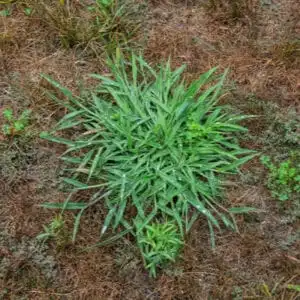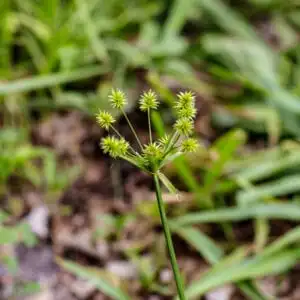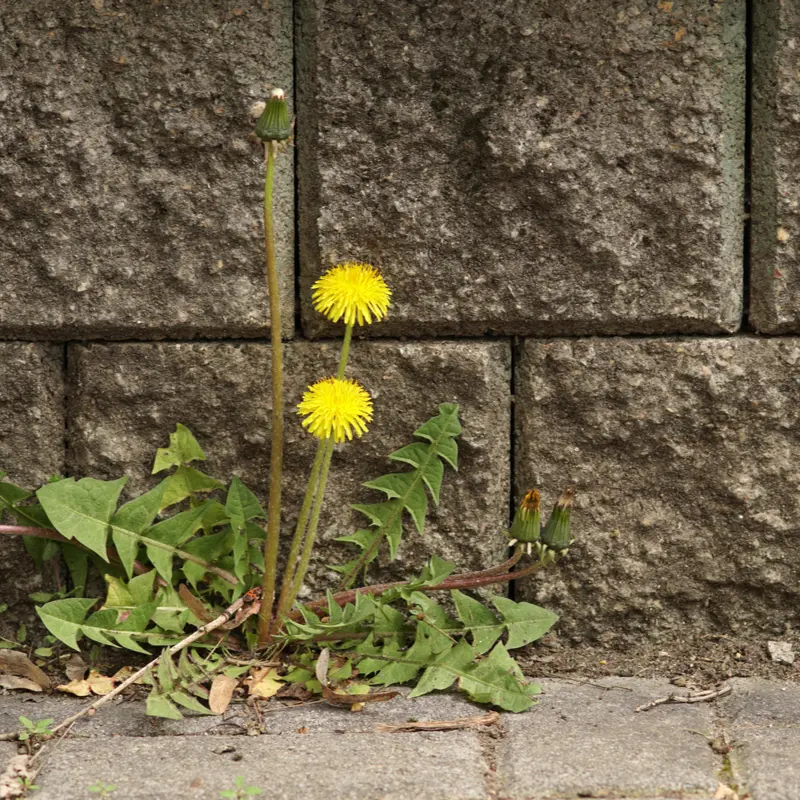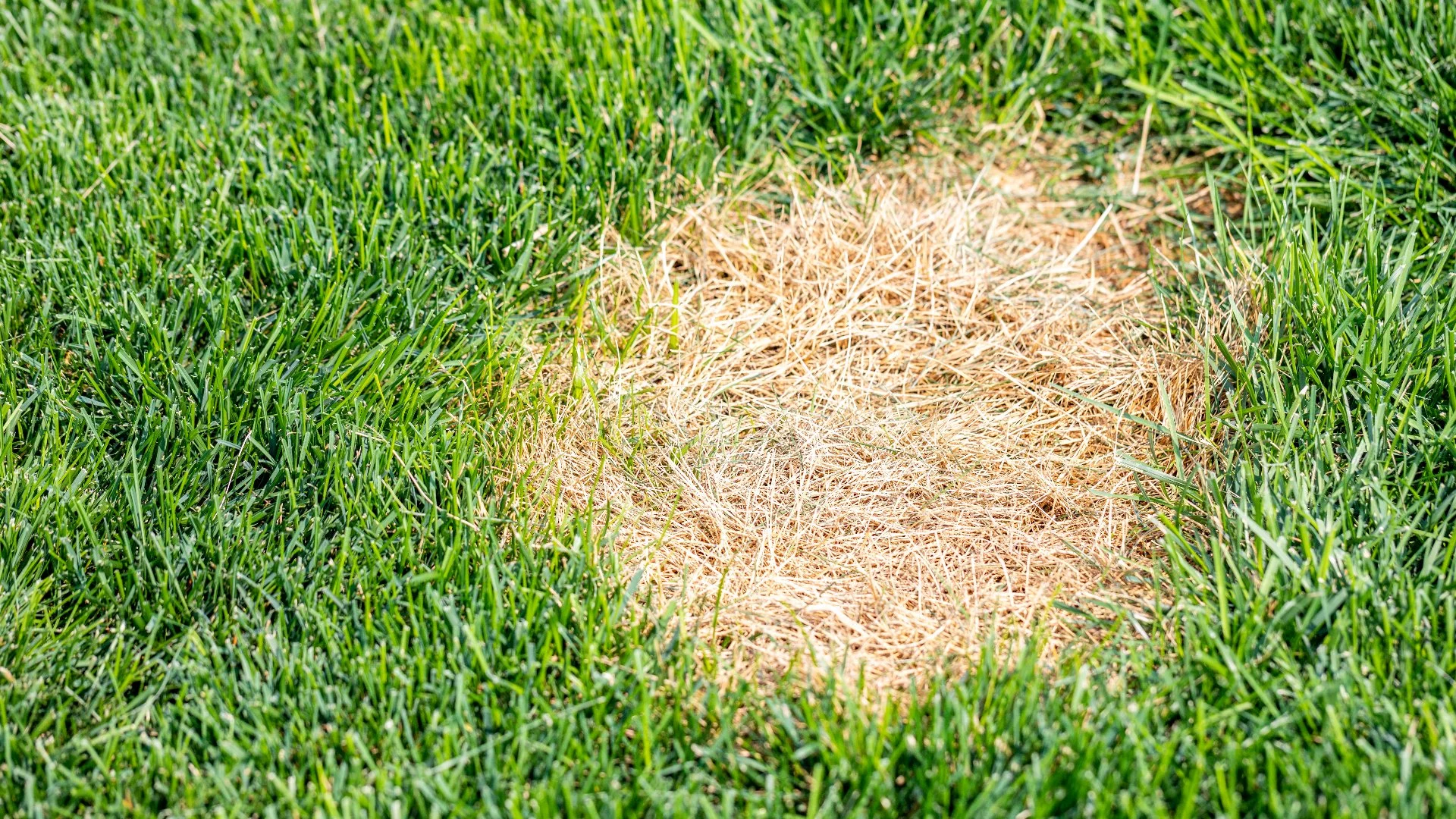There is nothing more aggravating than a beautiful lush green lawn with ugly weeds poking through. An eyesore, at the least, they are thieves, stealing vital nutrients, oxygen, and water from your grass. Summer weeds can sneak onto your lawn by seeds blowing in the wind from a neighbor’s yard or even birds who inadvertently pass seeds along. While weeds grow slower in the summer, the hot and dry weather makes your grass extra stressed, allowing weeds to sprout and often take over.
If weeds are sprouting up in your Southeastern PA lawn, chances are you have one of these five common weeds, crabgrass, oxalis, black medic, plantain, or nutsedge. Learn how to identify each of these weeds, how to prevent them, and what you can do once you have them.
Five Common Weeds Ready To Rear Their Ugly Heads On Your PA Lawn

Crabgrass
This grassy weed is both aggressive and hard to control. It actually starts growing in early spring, but because it can germinate over 1,000 seeds in one season, remnants of this bothersome plant may still be around. It is an annual weed that grows close to the ground. Its leaves branch out from the stem forming a star. It sort of resembles the legs of a crab (hence where the name came from.) It likes to pop up in thinned-out areas of your lawn that are weak and overstressed. As a result, you can often find crabgrass growing alongside paved surfaces or fence lines.
The best way to control crabgrass is through a pre-emergent in the spring. But if you missed the opportunity or crabgrass is still hanging around your property, spot spraying is your best option.
Oxalis
Oxalis is often mistaken for clover because it has green, heart-shaped leaves that turn a burgundy color in late summer. A perennial weed, it produces yellow flowers, and its slightly hairy leaves branch from the base of the plant almost at ground level. This opportunistic weed grows sporadically in landscape beds among shrubs and flowers, in vegetable gardens, and occasionally pops up in container plantings.
It is one of the most problematic weeds in Southeastern Pennsylvania to control and can easily take over your yard if not maintained. A small amount can be handpicked before seeds start forming but be sure to remove all portions of the plant, including the roots and rhizomes, or it will grow back. A strong, thick lawn will create less space for oxalis to grow, but when an invasion does occur, post-emergents may be necessary.
Black Medic
Black medic also has heart-shaped flowers. You can, however, tell its difference from oxalis in the long stem on its central leaf and the black seed pod it acquires in the summer. It is a summer annual that begins to sprout this time of year when the weather is hot and dry. As the plant matures, the stems become hairy and square, and six weeks into its growth, it produces bright yellow flowers. It often grows along roadsides and curbs.
You can stop this vile plant from growing by keeping your lawn healthy and strong. Black medic targets grass that is weak due to heat and drought. Maintain a lawn maintenance program with fertilizer, a spring pre-emergent, proper irrigation, and mowing. If black medic has already appeared in your lawn, start with hand-picking and then call in a professional.
Plantain
There are two types of plantain found here in Southeastern PA. They are broadleaf plantain and buckhorn plantain. They pretty much look the same, except the leaves of the buckhorn plantain are noticeably wider and longer. Plantain weeds are mostly found in compacted soil and neglected lawns. The best way to prevent and control plantain is by maintaining a healthy lawn with a regular fertilizer schedule and proper irrigation. If your grass contains plantain, there is a good chance your yard is feeling neglected. Plantain can also contaminate lawn equipment, so be sure to clean it thoroughly before using it to help spread this unsightly weed.
Nutsedge
This pesky perennial tends to prefer the moist areas of your lawn. However, it looks a lot like grass; therefore, it’s very important you identify that this weed is nutsedge before using any herbicide type. Nutsedge stems are triangular or V-shaped in a cross-section, while grass stems are hollow and round. Its leaves are thicker and stiffer and arranged in groups of three at the base.
The biggest problem with nutsedge is that it has the unique ability to reseed itself through underground tubers. Its rhizomes survive in the soil and sprout the following spring. Hand-pulling of this weed is not advisable as this method may just spread it more. You can eliminate nutsedge through digging. However, you must dig at least ten inches deep and ten inches around to ensure you stop the spread of the tubers. It is probably easier and less time-consuming to control nutsedge with a post-emergent herbicide. close up of nutsedge weed on lawn
Stop These Unwanted Weeds With Effective Lawn Care Services and a Weed Control Program

Weeds can be difficult to control. Different weeds require different techniques, and not all herbicides are the same. It is very easy to accidentally kill your grass using an herbicide incorrectly, and chances are, unless you have training and experience with weed control, the weeds will grow back. What you need are professional lawn care services combined with an effective weed control program.
At Delaware Valley Turf, we offer customized lawn care services that include the multiple fertilization your grass needs to stay healthy and the weed control applications your grass craves to both prevent and control weeds. Our weed control isn’t just included as part of our lawn care package; we also provide spot weed control as necessary. So, say goodbye to the five most common weeds here in Southeastern PA, as well as any other weeds that wreak havoc on your lawn. Call us today at (610) 328-4170 to learn more about our weed control program, or feel free to reach out to us here online.
Interested in receiving more tips and ideas? Follow our blog for more stories, then check us out on Facebook and Instagram.






Comments (0)
Thanks for your comment!
Thanks for your feedback! Your comments have been successfully submitted! Please note, all comments require admin approval prior to display.
Error submitting comment!
There is a problem with your comment, please see below and try again.